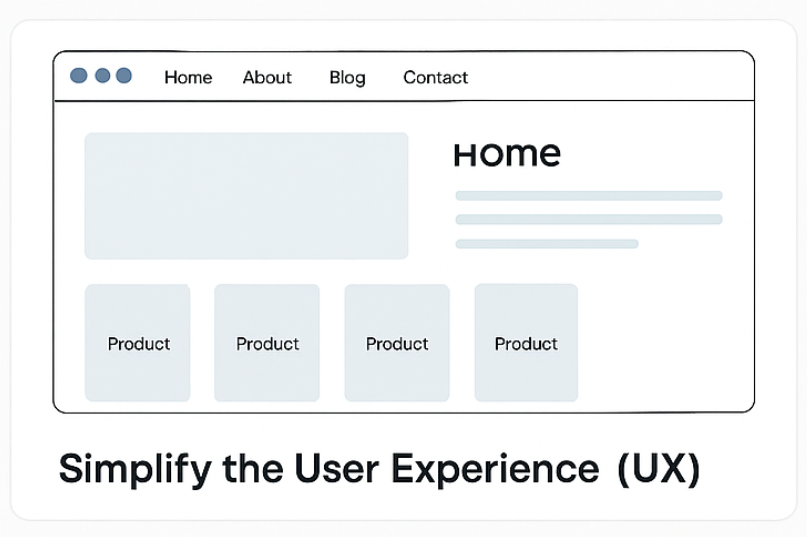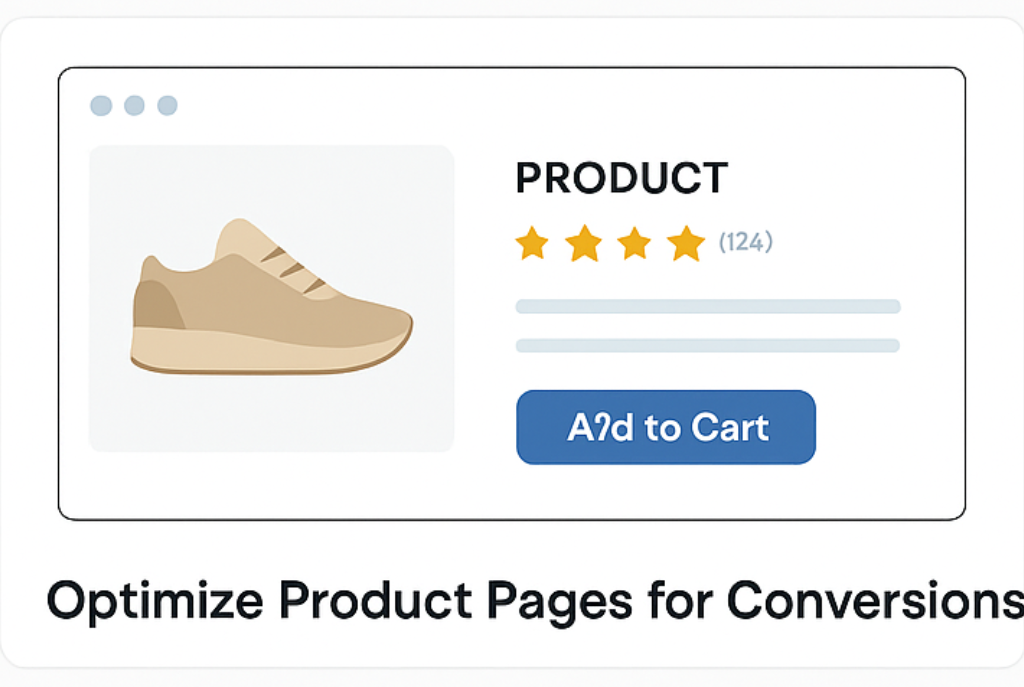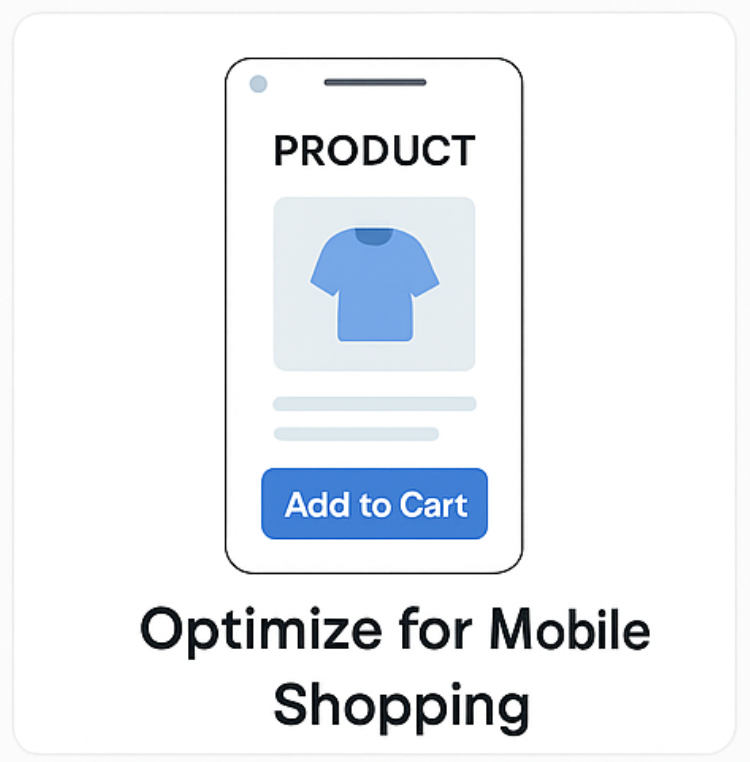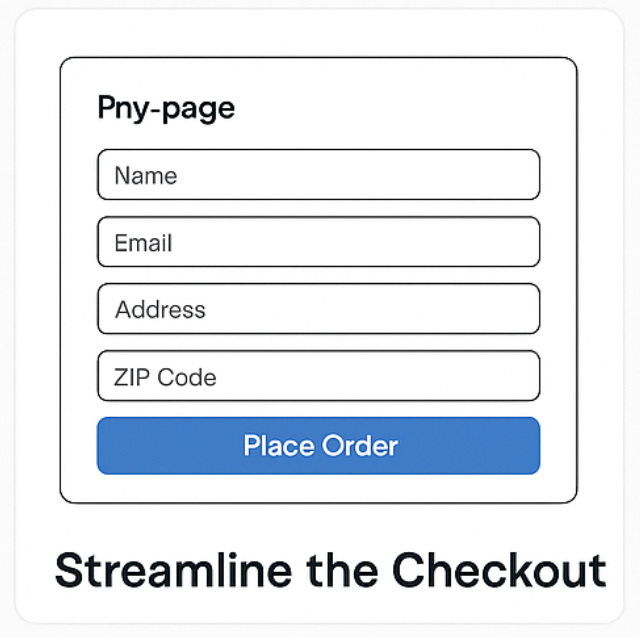Getting traffic to your ecommerce store is exciting—but without conversions, traffic means nothing. Conversions are the lifeblood of your online business. Whether you want users to make a purchase, sign up for a newsletter, or add a product to their cart, conversion optimization is the key to turning browsers into buyers. This detailed guide shows you how to increase ecommerce website conversions using tried-and-true methods that top-performing brands apply every day.
1. Simplify the User Experience (UX)
Great ecommerce websites prioritize ease of use above all else. Your visitors should never have to think twice about where to go, what to click, or how to find what they need.
Here’s how to improve UX:
- Use clean, clutter-free navigation with clear categories.
- Offer a prominent search bar—especially for larger stores.
- Avoid distractions like excessive pop-ups or banners.
- Make sure every page loads quickly, ideally under 2 seconds.
- Use consistent branding and intuitive layouts.

Bonus tip: A/B test different homepage layouts to identify what increases engagement.
2. Optimize Product Pages for Conversions
Your product pages are your best salespeople—but only if they’re built to persuade.
What your product pages need:
- High-quality images (including zoom, 360° views, or videos)
- A clear headline that communicates the product’s value
- Detailed but scannable descriptions—use bullet points to highlight features and benefits
- Pricing that’s easy to spot
- Visible stock status and delivery time
Also, make sure your “Add to Cart” button is in a prominent position and uses a contrasting color to draw attention.

3. Build Trust Through Social Proof
Trust is the foundation of every sale. New visitors are more likely to convert when they see that others trust your brand too.
You can build credibility with:
- Customer reviews and testimonials
- Star ratings on each product
- A “Featured In” section with press mentions or influencer endorsements
- User-generated content (like photos or videos from real customers)
- Guarantees (e.g., “100% Money Back” or “Free Returns”)
Pro tip: Implement review schema markup so Google can display ratings in search results.
4. Use Strong and Clear CTAs
Your call-to-action (CTA) buttons guide users toward conversions. If your CTAs are weak, generic, or hard to find, your potential customers may abandon the process.
Make your CTAs:
- Action-oriented (e.g., “Buy Now,” “Start Free Trial,” “Claim Your Discount”)
- Visible—use color contrast to make them pop
- Consistent across product and category pages
- Placed above the fold on mobile and desktop
Every CTA should answer the question: “What’s the next best action I should take?”

5. Optimize for Mobile Shopping
Over 60% of ecommerce traffic comes from mobile devices. If your site isn’t mobile-friendly, you’re leaving money on the table.
Ensure your mobile experience includes:
- Responsive design that adapts to any screen
- Touch-friendly buttons and dropdowns
- Simplified mobile navigation
- A mobile-specific checkout flow
- Speed optimization (compress images, use lazy loading)

Tip: Use Google’s Mobile-Friendly Test to identify mobile UX issues.
6. Streamline the Checkout Process
Many ecommerce stores lose customers right at the final stage: checkout. Even interested buyers will bounce if they face a clunky or confusing payment process.
Here’s how to streamline it:
- Offer guest checkout—don’t force account creation.
- Keep the number of form fields to a minimum.
- Use a progress bar to show where users are in the process.
- Offer multiple payment options—credit cards, wallets, cash-on-delivery.
- Use auto-fill where possible to speed things up.

Reminder: Test your checkout on mobile too—most cart abandonment happens there.
7. Use Exit-Intent Offers & Retargeting
Sometimes users leave for reasons outside your control. That doesn’t mean you’ve lost them for good.
Catch abandoning visitors with:
- Exit-intent popups offering a discount or free shipping
- Email capture offers (“Sign up for 10% off”)
- Retargeting ads on Google and Facebook
- Abandoned cart emails with incentives to return
Smart timing and personalization are key here—don’t be too aggressive.
Bonus Tip: Analyze User Behavior with Heatmaps & Funnels
Want to know exactly where users drop off or lose interest? Use tools like Hotjar or Microsoft Clarity to view heatmaps and session recordings.
You’ll uncover:
- Which sections people ignore
- Where they click the most
- Which fields cause form abandonment
This gives you data-backed insights to improve weak spots in your conversion flow.
Final Thoughts
Traffic without conversions is just noise. To build a profitable ecommerce business, you need a website that’s not only beautiful but also engineered to sell.
By applying these strategies for how to increase ecommerce website conversions, you’ll create a smoother, more persuasive, and more trustworthy experience for every visitor who lands on your site.
💡 Want a custom ecommerce site built to convert? Explore professional ecommerce web design services and turn your store into a conversion machine.



